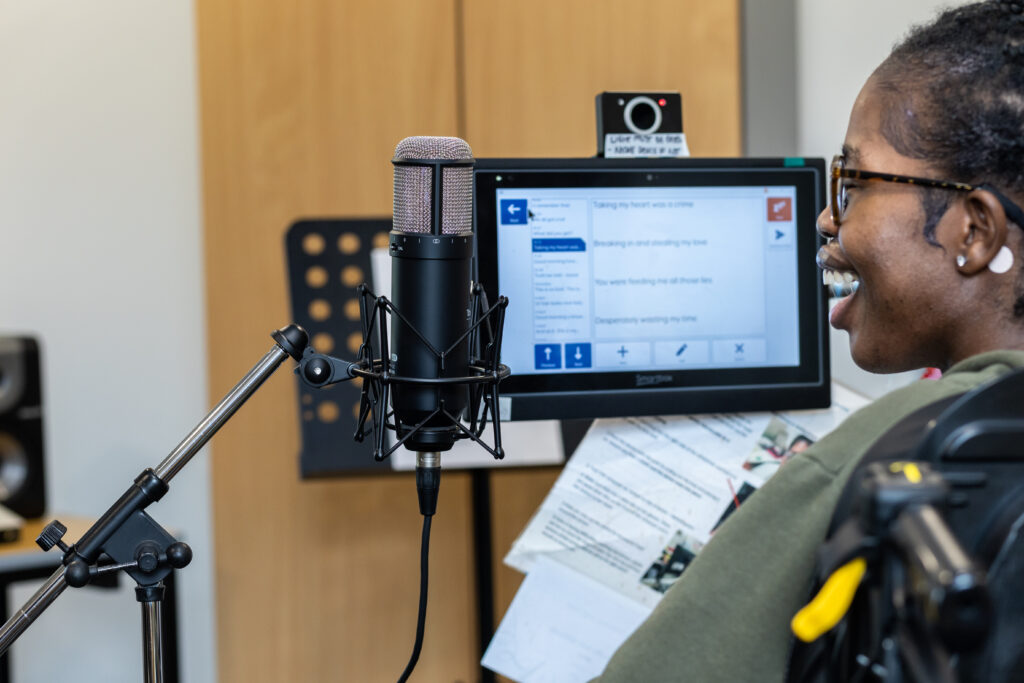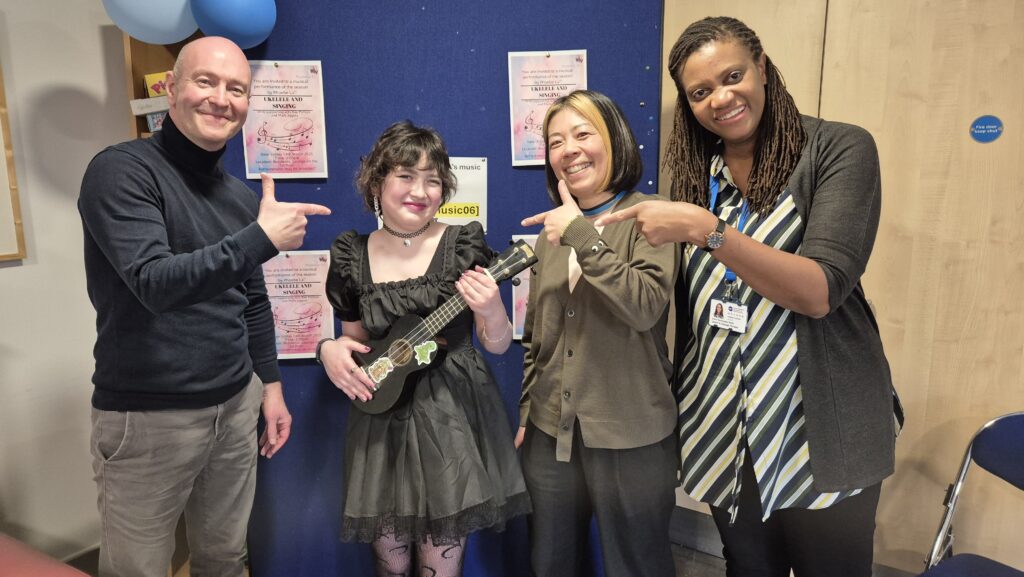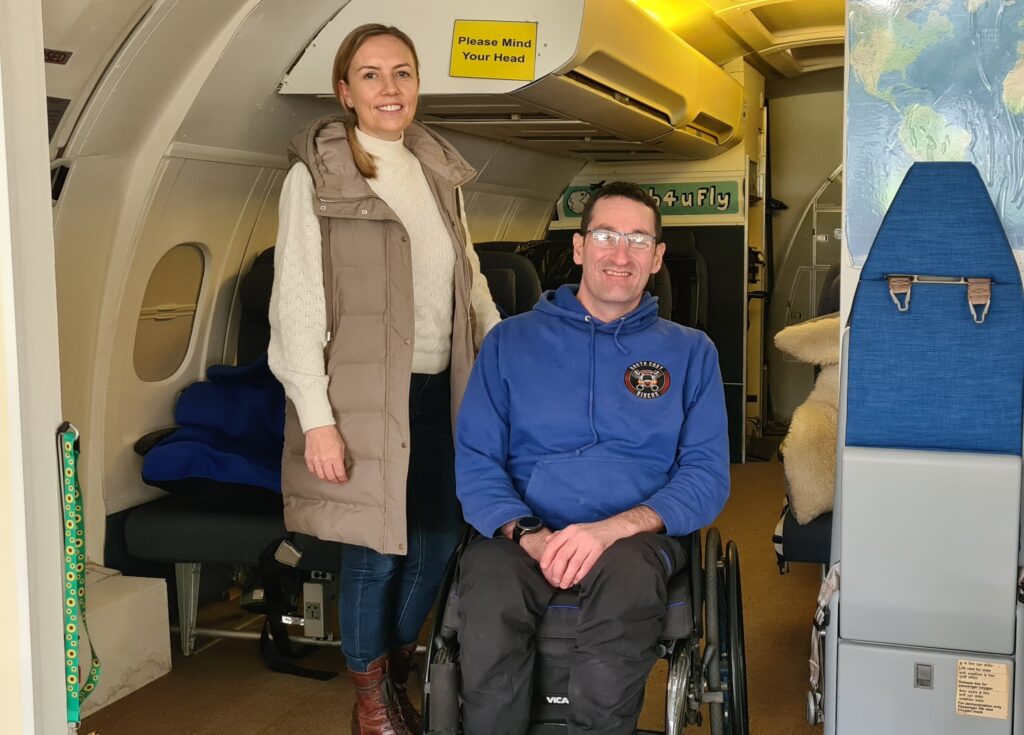Multi-disciplinary working underpins all client plans at the Care and Rehabilitation Centre. Recently the therapy team developed a bespoke treatment programme for a client, RA, that combined a Speech and Language therapist (SLT), Occupational Therapist (OT) and Psychology Assistants (PA) to provide a client with a music-based therapy programme. This built on her love of music to make the programme motivational with clear musical output goals that also achieved multiple therapeutic objectives.
RA is in her 30s and has sustained multiple strokes, the most recent being severe brainstem infarcts which left her with extensive facial muscle weakness (Dysarthria) and incoordination of speech muscles (Apraxia of Speech). She also has a significantly reduced ability to use her arms and hands and limited mobility. As a result of RA’s communication impairments, she primarily communicates using an Augmentative and Alternative Communication (AAC) device, which consists of a computer screen with an electronic alphabet chart on it and she controls this with a sensor attached to her glasses.
When she came to QEF RA initially received intensive impairment-based therapy, with a focus on strengthening her speech muscles through repetitive and variable practice. This has been shown to significantly enhance speech accuracy as the brain can form new pathways due to neuroplasticity. Initially SLT sessions focused on producing vowel sounds consistently and then this progressed to practicing consonants. RA was then able to practice more complex speech such as forming simple words. However, given the severity of RA’s speech impairments, her progress was gradual and this made motivation for SLT sessions challenging.
RA is well known around the centre for her love of music and her gregarious personality; she is often sat in the downstairs reception area playing music and talking with staff and other clients. As a result of this, her Speech and Language Therapist was looking for a new way to re-engage RA with her therapy goals and she developed a therapy plan to deliver music-based treatment sessions, in partnership with one of QEF’s OT’s and two Psychology Assistants. The aim of the sessions were to incorporate speech/voicing, upper limb movement, psychosocial and cognitive skills. This creative outlet offered RA an interactive and interesting way of transferring the progress she’d made already to a more functional task, as well as enhancing her quality of life through promoting socialisation.
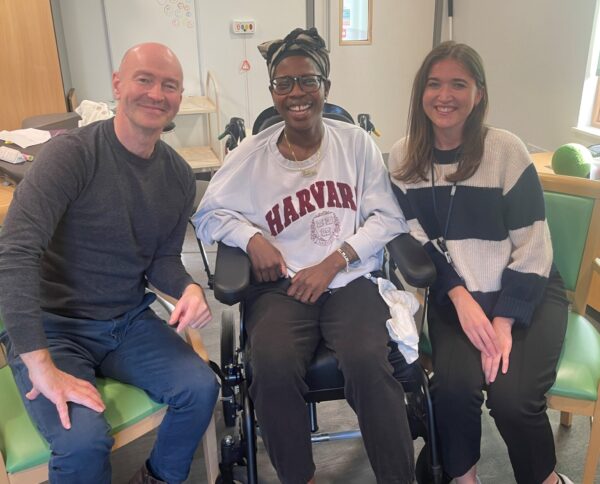
RA was involved in every aspect of producing the music in these sessions and she really thrived in this creative environment. RA’s involvement included:
-assisting with tuning the guitar through nonverbal communication (i.e., pointing with her index finger and raising or lowering her head),
– choosing the melody,
– recording vocals for each track,
– playing percussive instruments following set up,
– creating the song themes and titles,
– writing lyrics and communicating the lyrics via her AAC device to be recorded for the songs.
Listen to one of the songs RA and the team produced together
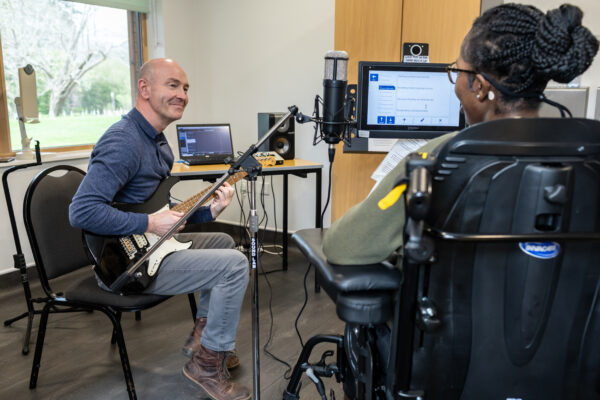
Over a 12 month time frame, RA and her therapy team jointly produced a total of four original songs that ranged from guitar-based pop to cinematic and even a Christmas tune. And at the same time RA made good progress in multiple therapy areas.
In SLT she gradually became less dependent on her AAC device and attempted to voice more words in appropriate contexts, such as “hi”, “bye” and “how are you?”. From an OT point of view RA achieved improvements in the use of her left upper limb, with better coordination, precision of movement and the ability to play percussive instruments in time with the music such as bells and the tambourine for the Christmas song. And from a psychological perspective, the sessions appeared to boost RA’s mood, aid with emotional expression and promote memory and attentional skills.
As a result of this practice, RA expressed interest in learning to play adapted musical instruments and to explore working with the AAC team to download specific music software onto her device so she can make her own music projects in the future.
These music-based therapy sessions were especially successful in practicing repetitive rehabilitation exercises, in a motivating and sociable format. The therapy was personally meaningful to the client which was reflected in the music that was produced. It also enabled RA to express herself emotionally through lyrics which were articulated via her AAC device.
When asked about the music sessions RA wrote “I think the sessions have been excellent with it being Libby’s idea to bring Mark in as well, who I must say has been fantastic. I literally can’t wait for Friday’s, it is my favourite day because of the music we produce. It is truly amazing.”
